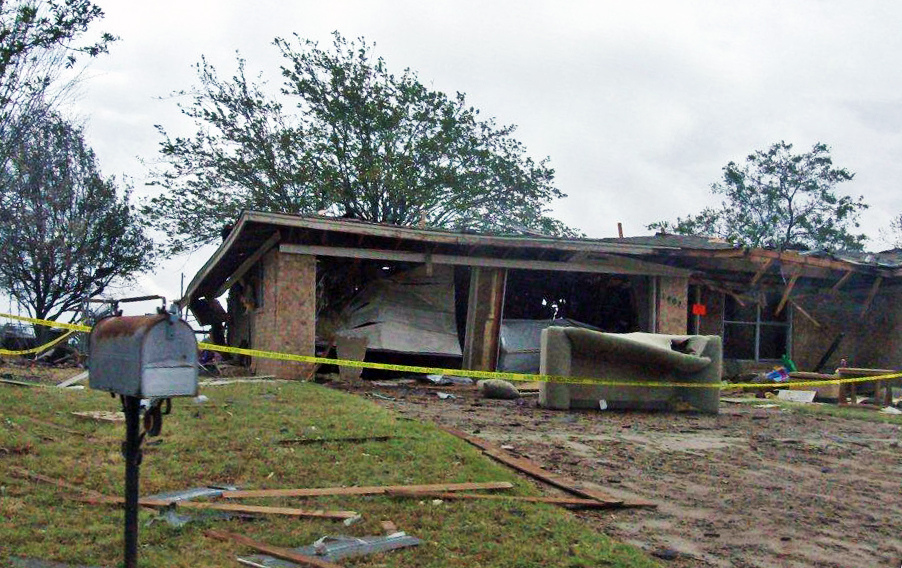
TV shows make flipping houses look fun and easy. Can you really make a lot of money doing this? Yes, it is possible. But only if you have the right skills, knowledge and timing. Choose the wrong fixer upper, and you could lose your entire investment.
So how do you pick right? Read on for house flipping basics, and the risks that can happen, which make insurance an important component to any flip.
Comparing a Market
“House flipping” means buying a house, quickly fixing it up, then selling it at a profit. Individual investors may do this on a small scale, flipping a few houses per year. Large-scale flippers may also buy up many houses, often at auction, fixing up and selling dozens or even hundreds annually.
According to Adam Data Solutions, more than 200,000 homes were flipped in 2017, reaching an 11 year high. For Texas, hot markets are DFW, Houston, Austin and San Antonio. Here’s a sample of a zip code in Lubbock near Texas Tech University
| Metro Area: | Lubbock, TX | |
| Zip Code: | 79416 | |
| 2017 Avg Days to Flip: | 217 | |
| 2017 Flipped Price: | $189,361 | |
| 2017 Flipping Gross Profit: | $24,738 | |
| 2017 Gross ROI: | 15.0% | |
| 2017 Home Flips: | 27 | |
| 2017 Median Purchase Price: | $164,623 | |
| Home Flipping Rate (Pct of Total Sales): | 6.9% | |
| YoY Pct Change: | 17% |
Market Watch attributes the flipping trend to “low interest rates, tight inventory and high demand for entry-level homes.” Profits on flipped houses are also up.
Flipping is also on the rise in the luxury market. This may be due to baby boomers retiring to states like Texas with better tax advantages. With extra money, retirees and empty nesters are upgrading their home.
Becoming a House Flipper
If you’re an individual or small-scale investor, your personal remodeling skills are a key component. Doing your own work can lead to higher profits than farming out every task.
A few requirements to aid in your success:
- High credit score, to secure good financing
- Plenty of cash for a down payment, so you don’t get stuck paying for private mortgage insurance (PMI)
- Market knowledge to help you gauge which real estate to buy
How do you choose a house to flip? Location, location, location! The home must be in a desirable neighborhood in a city where people want to live, preferably with good schools nearby. Fortunately, nearly every city in Texas is growing, although some quicker than others.
A house should be selling below current market value, in order to maximize profit. The house should be structurally sound, with “good bones”. Teardowns and complete gut properties are less profitable.
Next, choose your market. Are you wanting to sell a home to a family, a luxury buyer or rent out a home to students? Your location and square footage can determine your end buyer.
Considering a Flip
- The ideal flip needs easy cosmetic fixes, such as new carpet or wallpaper, rather than major renovations. Top candidates are close to where you live for an easy commute.
- Never buy a house based on pictures you see on the internet. Ever try internet dating, only to find in person your date didn’t impress? Same goes for houses. That moldy smell doesn’t come across in photos.
- Focus on the kitchen, widely considered the most important area of a house, and usually the most in need of a redesign. Figure out how much you’ll need to spend for the kitchen to appeal to potential buyers.
- It might take patience to wait for the right fixer upper to come along. Don’t hurry into a major financial decision you’ll regret. Avoid houses with multiple offers, one that is on the market for some time will allow you to broker a better deal.
- Get a comprehensive inspection before closing on the house. Avoid homes with water damage, foundation problems and non-cosmetic issues.
Before you buy a house to flip, calculate how much you’ll be able to sell it for once fixed up. Plus, determine how much money and time you’ll put into the fixing. Don’t forget to add in the cost of permits. Richard Levine, president of the Maryland-based Greenbriar Lending LLC, offers this formula:
- Subtract your remodeling costs from 70% of the price you expect to eventually sell the house for.
- What’s left is your maximum offer price. For example, if you expect to sell the house for $300,000, then start with $210,000, or 70 % of the selling price.
- If you plan to spend $40,000 in improvements and permits, that leaves $170,000 as your maximum offer price.
Consider the prices of other homes in the neighborhood and make sure your flip fits in, in terms of eventual selling price and the types of fittings and amenities people expect. Will it be the best home on the block? What is the current best home on the block selling for?
Now you know what to look for in a flip! Coming up next in part 2: insurance and disclosures for house flippers.
An Actual Home in Lubbock Flipped!
We found this YouTube video showing off a flipped home in southwest Lubbock. Using Zillow, we can see what it was purchased for pre-flip and the sale price post-flip. In 2015, this home on 4809 38th St was sold for $19,300. It took 1.5 years for the renovations before it was listed on the market again in July 2016. It wasn’t sold until nearly a year later for $79,900.
All told, gross profit (not accounting for renovation costs, seller costs, etc.) was $60,600.
The monthly mortgage was close to $100, with a $1000 down payment and annual property taxes at $900. After these costs are included for the amount of time it was owned by the flipper, the gross profit goes down to $53,000. We can assume at least $20,000 of renovation work, leaving around $23,000 in actual profit (not including time).




